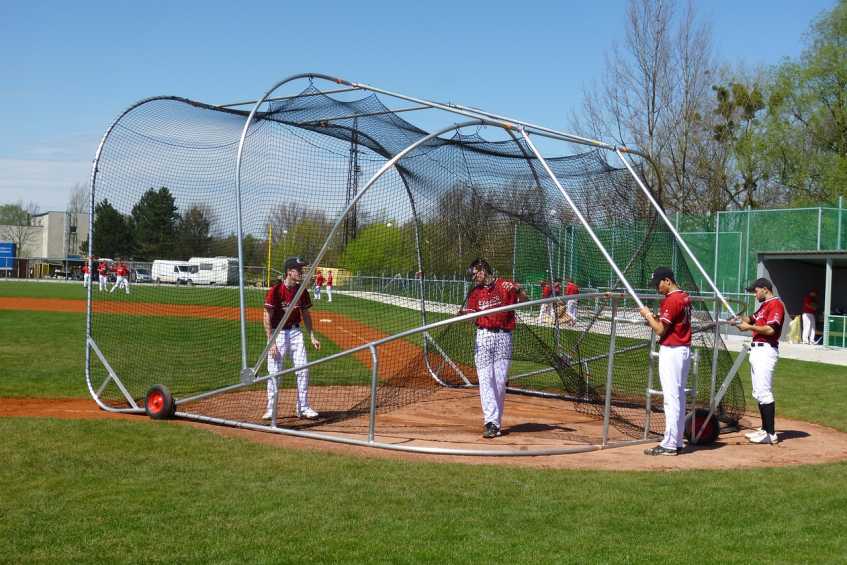
Imagine having the ultimate baseball practice experience in the comfort of your own backyard. With the right batting cage, this dream can become a reality. But how do you choose the perfect batting cage for your home? In this blog post, we will guide you through the process of selecting the best batting cages for home use, discuss different types of batting cages, and provide recommendations on top-rated high quality batting cages. We will also cover essential accessories and extras, as well as tips on installation and maintenance.
Choose the right batting cage for your home by assessing available space, setting a budget and understanding player needs.
Consider pop-up, enclosed or semi-enclosed cages to meet various requirements.
Accessories such as Jugs Lite Flite pitching machines and protective screens can help create an effective practice environment. Installation process & routine maintenance are important for optimal performance.
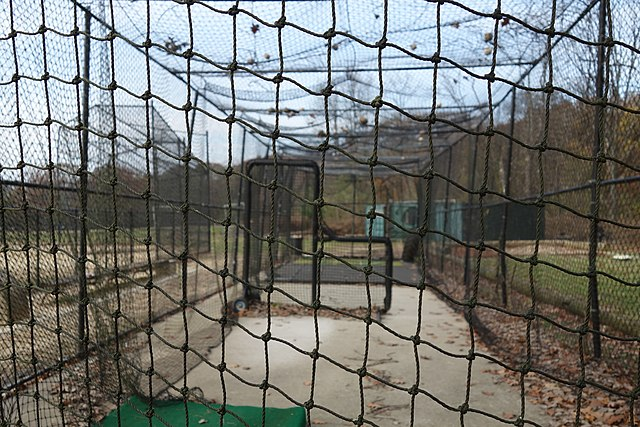
Tdorante10, CC BY-SA 4.0, via Wikimedia Commons
Selecting the best backyard batting cage for your home depends on several factors, including available space, budget, and the needs of the players who will be using it. By considering these factors, you can ensure that your chosen batting cage will provide an enjoyable and effective practice experience for everyone involved.
In the following subsections, we’ll discuss how to assess your space, set a budget, and understand player needs to help you find the ideal batting cage for your home.
Before purchasing a batting cage, it’s crucial to assess the available space in your backyard or indoor area. This will help determine the appropriate batting cage size and type for your needs. When selecting a baseball batting cage for older children, consider a size batting cage, that is 70 feet in length, 14 feet in width, and 12 feet in height, and choose appropriate batting cage nets for durability and safety. For indoor use, consider using 5-gallon buckets filled with sand or concrete as pole footing and sandbags to hold down support poles or wire stakes. Outdoor batting cage nets should be durable and weather-resistant.
In addition to the size of the batting cage kits have, consider the skill level of the players who will be using it. For younger players or those below the high school level, a short tunnel batting cage may be more suitable. By carefully assessing your available space and the needs of the players, you can ensure that your chosen batting cage will provide the optimal practice environment.
Establishing a budget for your home batting cage can help you narrow down your options and ensure that you choose a residential batting cage, that meets your needs without breaking the bank. Factors that influence the cost of a batting cage include shipping costs and the type of materials used, such as a commercial batting cage frame. It’s essential to keep these factors in mind when budgeting for your own batting cage to avoid any surprises down the road.
Consider the available options for purchasing a home batting cage, such as frames only, nets only, or complete batting cages that include both. Depending on your budget and needs, you may opt for a more affordable option like a full fiberglass frame and batting cage or a more durable and professional-level fiberglass batting cages or cage with a steel frame. By setting a budget and exploring different options, you can find the perfect batting cage for your home without overspending.
Knowing the skill level, age, and preferences of the players using the batting cage is crucial when selecting the most suitable option. For example, if you’re choosing the batting cage for a child who is just beginning to play baseball or softball, you might opt for a high-quality portable backstop, also known as a portable batting pop-up or complete batting cage netting top.
As players grow and develop their skills, it’s essential to adjust the size and type of batting cage accordingly. For instance, a child who is fond of playing baseball or softball may require an up-sized batting cage around eight or nine years old. By understanding and accommodating the needs of the players, you will ensure that your chosen batting cage serves its purpose and helps improve their skills effectively.
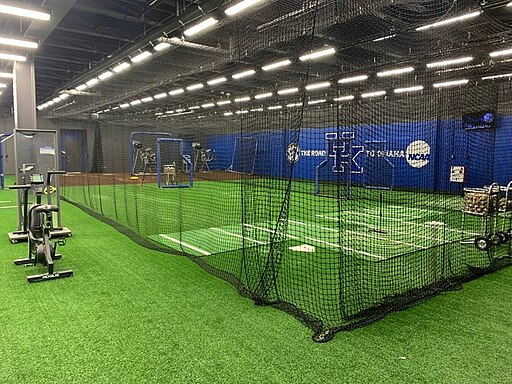
User12311!, CC BY-SA 4.0, via Wikimedia Commons
There are different types of home batting cages available, each with its own unique features and advantages. In this section, we will discuss pop-up, enclosed, and semi-enclosed batting cages, providing an overview of each type to help you decide which one is the best fit for your needs.
Whether you’re looking for a temporary setup or a permanent solution, understanding the various types of batting cages will help you make an informed decision.
Pop-up portable batting cages that are portable and easy to set up, making them an ideal choice for temporary use or limited space. These outdoor batting cages are also suitable for younger players, as they provide a safe and flexible practice environment.
However, there are some drawbacks to using an all-fiberglass batting cage frame. They are the least resilient of all batting cage frame types, can shatter if struck with a forceful line drive, and may not hold batted balls up well in cold temperatures or strong winds.
Despite these drawbacks, pop-up batting cages offer a convenient solution for those who need a temporary or portable batting cage. They are a popular choice for families with young players or those with limited backyard space.
Enclosed batting cages provide a more professional experience and are suitable for serious players looking to improve their skills. These commercial batting cages are often larger than pop-up best backyard batting cages and feature more durable materials, such as steel frames and heavy-duty netting. Some popular enclosed batting cages include the best batting cage, the Fortress Ultimate Baseball Batting Cage, which features a galvanized steel frame and #42 grade commercial netting material for exceptional durability.
Enclosed indoor batting cages are recommended for collegiate and professional players who require a larger space and a more robust setup to practice their skills effectively. By choosing an enclosed batting cage, you can ensure that your practice environment is both durable and suitable for advanced players.
Semi-enclosed batting cages offer a balance between portability and durability, making them a versatile choice for various skill levels and ages. These cages typically feature a combination of a fiberglass frame and steel rods, providing a more stable and resilient frame than an all-fiberglass option.
Youth players may consider a semi-enclosed batting cage with a length of 30 to 40 feet, which is more appropriate for their skill level and needs. By choosing a semi-enclosed batting cage, you can provide a versatile practice environment that caters to a range of players and requirements.
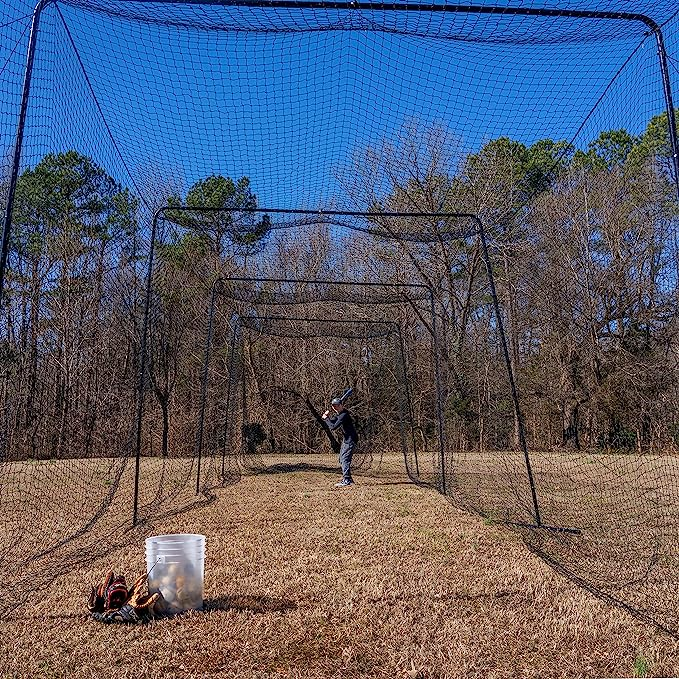
Now that we’ve explored the different types of home batting cages, let’s take a look at some top recommendations for the best home batting cage. These batting cages have been highly praised for their durability, ease of use, and overall performance.
The Rookie Complete Backyard Batting Cage, Slugger’s Sanctuary 55’ Complete Batting Cage, and Heater Sports PowerAlley Baseball & Softball Batting Cage all come highly recommended for home use. In the following subsections, we’ll discuss the features and advantages of each of these top-rated batting cages.
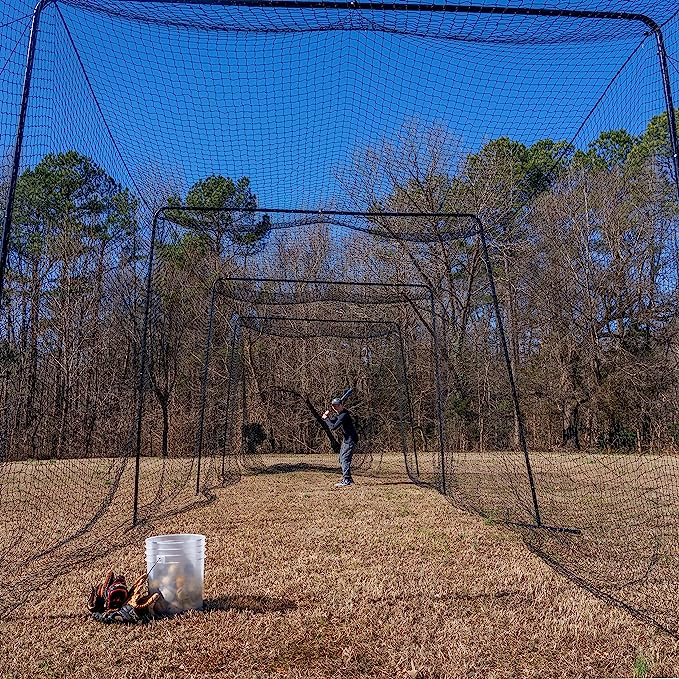
The ANYTHING SPORTS Full Batting Cage is an excellent option for players of various skill levels looking for the best backyard batting cages. Its frame is constructed with 1 1/2 inch galvanized steel tubing, ensuring durability and stability during use. The batting cage material is also equipped with polyethylene netting, which offers excellent resistance against wear and tear.
This batting cage is easy to assemble and suitable for various skill levels, making it a popular choice for families and baseball enthusiasts alike. With its durable construction and versatile design, the ANYTHING SPORTS Full Batting Cage is an excellent investment for any baseball or softball player looking to enhance their skills at home.
Find the ANYTHING SPORTS Full Batting Cage on Amazon
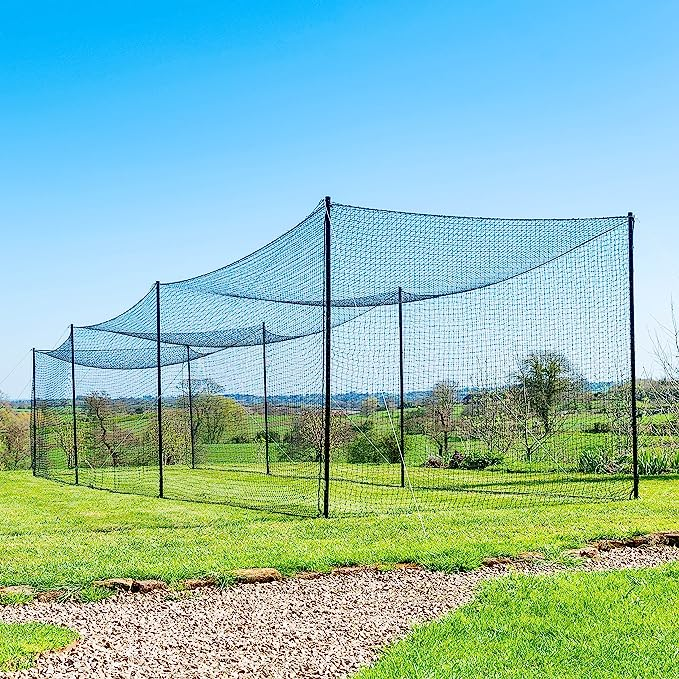
The Fortress Ultimate Baseball Batting Cage is a heavy-duty option designed for serious players. It features a 2-inch steel frame and #42 polyethylene twist netting, ensuring durability and longevity during use. This batting cage kit also comes with a comprehensive package that includes all poles and netting, as well as a collapsible design for easy setup and disassembly.
Ideal for dedicated players looking to improve their skills, the Fortress Ultimate Baseball Batting Cage offers a professional-level practice hitting environment in the comfort of your own backyard. With its sturdy construction and advanced features, this batting cage is an excellent choice for serious players who demand the best from their practice equipment.
Find the Fortress Ultimate Baseball Batting Cage on Amazon

The Heater Sports PowerAlley Baseball & Softball Batting Cage is a lightweight and affordable option that comes with a built-in heater sports pitching machine harness for added convenience. This batting cage is suitable for players aged 4 to 12 years old, making it a versatile option for growing families and young athletes.
While damage to the fiberglass cages and frames caused by extreme weather conditions may not be covered by the manufacturer’s warranty, the Heater Sports PowerAlley Batting Cage offers an excellent balance of affordability and functionality for those looking to enhance their skills at home. Its lightweight design and built-in pitching machine harness make it an attractive option for parents and players alike.
Find the Heater Sports PowerAlley Cage on Amazon
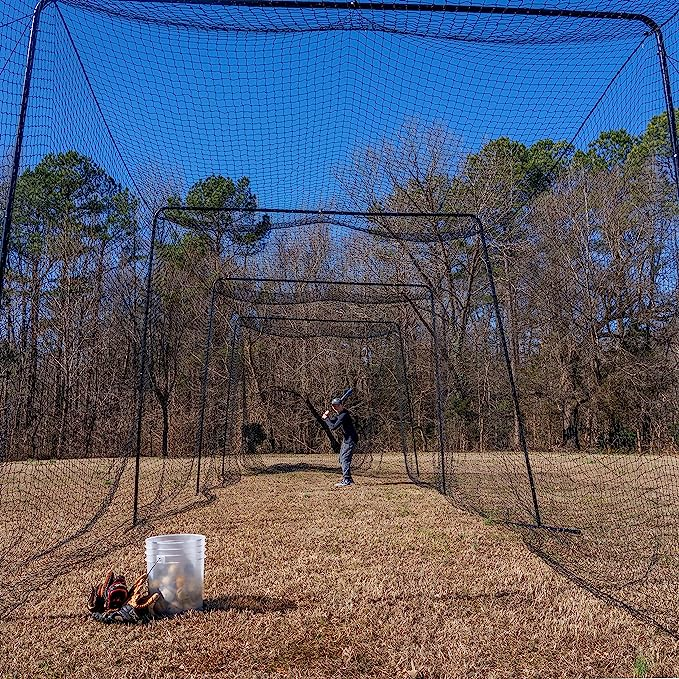
To enhance your home batting cage experience, it’s essential to invest in the right accessories and extras. Pitching machines, protective screens, and training aids are all necessary for a complete and effective batting practice environment.
In the following subsections, we’ll discuss the importance and features of each accessory, helping you choose the right extras to get the most out of your home batting cage.
Pitching machines are an invaluable tool for players looking to improve their swing and overall skills. These machines provide consistent pitches, allowing players to practice their swing and develop good mechanics. Available in two varieties - arm action machines and circular wheel machines - pitching machines come equipped with features such as wheels, swivel, vertical pivot, feeder, power source, in-line switch or remote, and balls.
By using a pitching machine in your home batting cage, you can provide a more effective and consistent practice environment for players of all skill levels. Whether you’re a beginner looking to develop your swing or an advanced player refining your skills, a pitching machine is an essential accessory for your home batting cage.
Safety is paramount when it comes to practicing baseball or softball, and protective screens play a crucial role in ensuring the safety of the pitcher or pitching machine during batting practice. These screens are typically constructed from durable materials to provide adequate protection to operators, and some screens may even include padding to guard against ricocheting balls.
By investing in a protective screen for the pitching machine combo your home batting cage, you can ensure a safe practice environment for players and coaches alike. This essential accessory not only protects those operating the pitching machine, but also provides peace of mind for everyone involved in the practice session.
Training aids, such as tees and targets, can greatly enhance the effectiveness of practice batting sessions in your home batting cage. These aids are designed to facilitate specific elements of the game, such as striking, throwing, or capturing. Some examples of training aids include batting tees, pitching targets, and agility ladders.
By incorporating training aids into your practice sessions residential batting cages, you can create a more targeted and efficient practice environment that helps players develop specific skills and techniques. With the right combination of batting mechanics and training aids, your home batting cage can become a comprehensive training hub for baseball and softball enthusiasts.
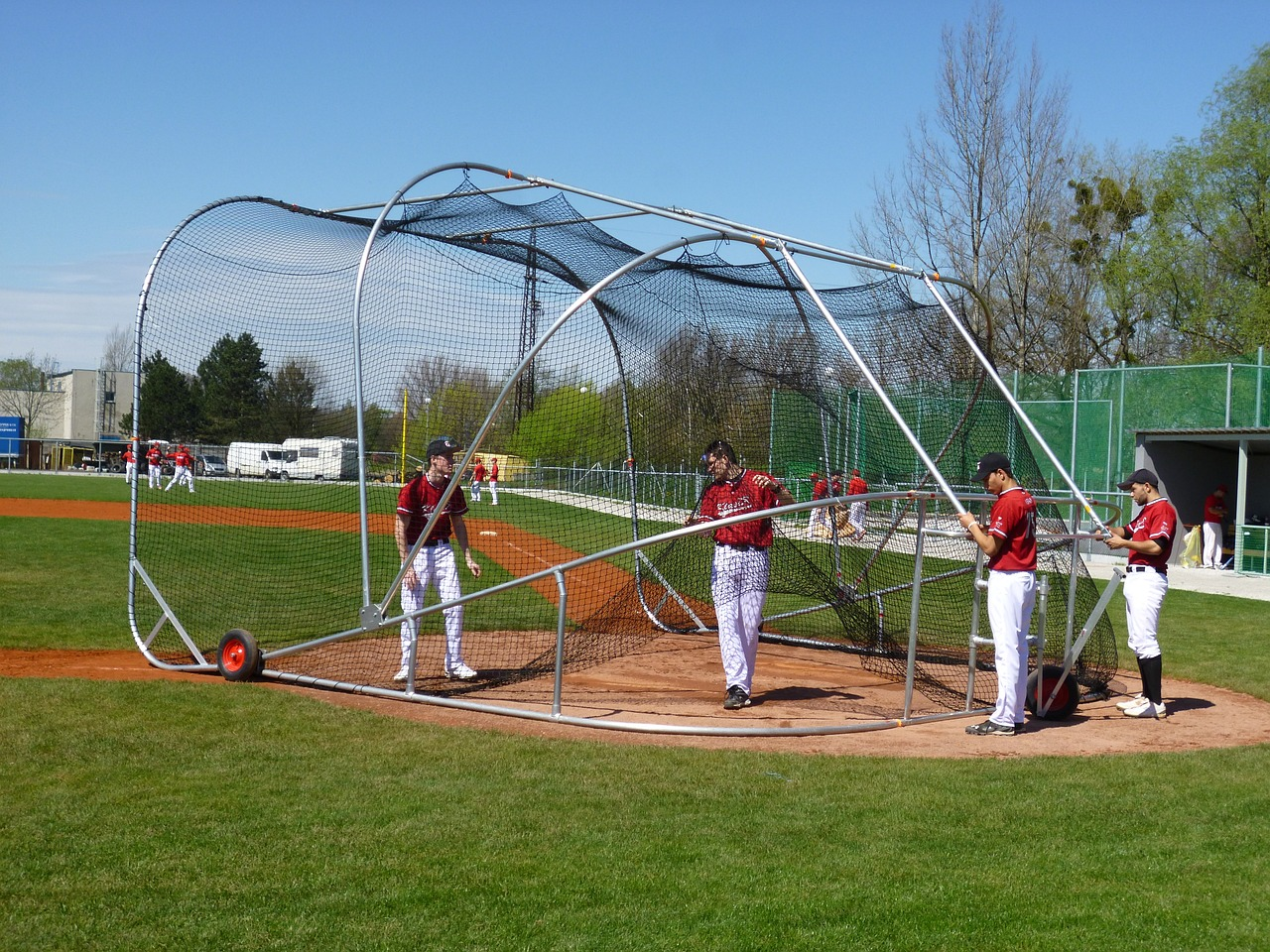
Proper installation and maintenance are crucial for ensuring the longevity and optimal performance of your home batting cage.
In the following subsections, we will provide tips on installing and maintaining your home batting cage, helping you keep your investment in top condition for years to come.
A well-installed batting cage ensures safety and stability, whether it’s a temporary or permanent setup. When installing your home batting cage, it’s essential to follow the proper procedure, which includes leveling the ground, eradicating any debris, and ensuring that the ground is solid and level. Additionally, you’ll need to measure the area, affix the cable line to the posts, and fasten the cable line with tensioners when installing the cable line for your home batting cage.
Establishing the frame hitting net, for your home batting cage involves assembling the frame, affixing the netting, and stabilizing the frame with stakes. By following these steps and ensuring that the net world sports your batting cage is securely installed, you can create a safe and stable practice environment for players of all skill levels.
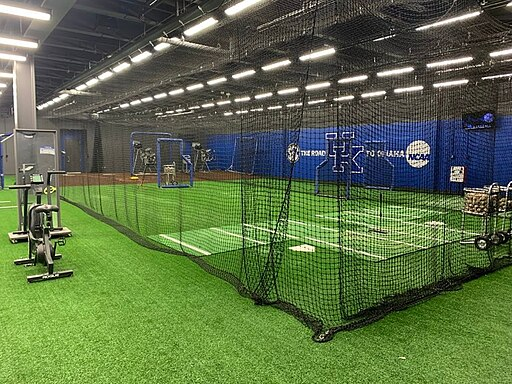
Routine maintenance is essential for prolonging the life of your batting cage netting, and ensuring optimal performance. This includes checking for wear and tear, such as inspecting the netting for any tears or holes, and inspecting all equipment for signs of wear. Regular cleaning of the batting cage should also be undertaken to remove dirt and debris.
Additionally, routine maintenance should involve tightening connections, such as ensuring that all nuts and bolts are firmly fastened, and that all connections are secure.
By regularly inspecting and maintaining permanent structure of your home batting cage, you can ensure its longevity and continue enjoying a top-quality practice environment for years to come.
In conclusion, choosing the right batting cage for your home may seem daunting, but by considering factors such as space, budget, and player needs, you can make an informed decision. With a variety of options available, such as pop-up, enclosed, and semi-enclosed batting cages, there is a perfect solution for every backyard and skill level. By investing in the right accessories and maintaining your batting cage properly, you can create a safe and effective practice environment that will help players develop their skills and enjoy the game to its fullest.
Considering that building and installing a batting cage for your backyard typically involves purchasing materials such as netting, frames, and poles, it can cost anywhere from $2,400 to $4,500.
For the optimal batting cage experience, we recommend an at least 12-14 foot wide professional level batting cage. A 10-foot width hitting cage just doesn’t provide enough room for batters to move around and get the practice they need to refine their swing.
Therefore, we do not suggest a 10-foot batting cage.
A 35-foot batting cage can work; however, it is far from ideal. While it may provide enough space for practicing some batting drills, it doesn’t give batters the full benefit of a longer cage to really hone their skills.
As such, a 35-foot long batting cage may be sufficient but is not recommended.
While a backyard batting cage could be a good investment to help you improve your game, it’s important to make sure that your property is large enough to accommodate the structure, and that local regulations don’t prohibit the construction of a batting cage in your yard.
Overall, building a batting cage in your backyard can be a great way to practice your batting skills and develop your baseball or softball hitting abilities further, but it’s important to consider size, safety, and regulations before proceeding with the project.
The three main types of home batting cages are pop-up, enclosed, and semi-enclosed, offering a range of benefits to users. Pop-up baseball batting cages are the most affordable option and are easy to set up and take down. They are also the most portable, making them ideal for those who need to move their cage frequently. Enclosed backyard batting cages also provide the most privacy.
Chris Sloan is a former baseball league commissioner and travel baseball coach who has made significant contributions to the sport. In 2018, he founded selectbaseballteams.com, a website that helps parents find youth and travel baseball teams in their local areas. Since its launch, the website has experienced impressive growth, offering a wealth of resources including teams, news, tournaments, and organizations. Chris's unwavering passion for baseball and his innovative approach to connecting parents with quality baseball programs have earned him a respected reputation in the baseball community, solidifying his legacy as a leading figure in the world of youth and travel baseball.
There are 0 comments on "The Ultimate Guide to the Best Batting Cages for Home Use in 2023"
chandler allen says:
"Hi my name is chandler, i’ve enjoyed..."
On Wanting to tryout for summer ball. as an 18 year old
david graham says:
"With no current MLB team in Canada,..."
On With no current MLB team in
Charles Chavez says:
"To All Coaches: Do you have13U or..."
On Looking for Games